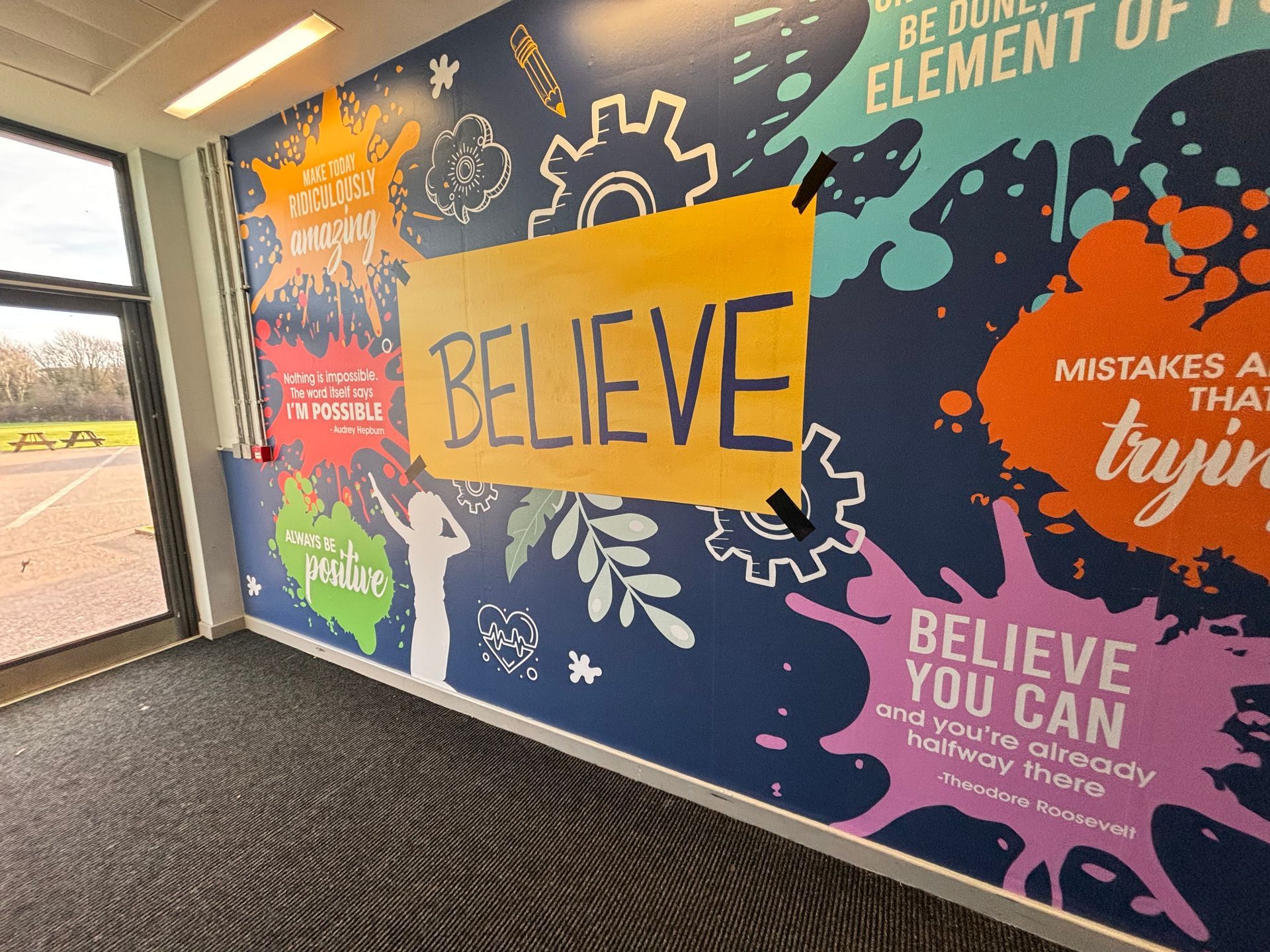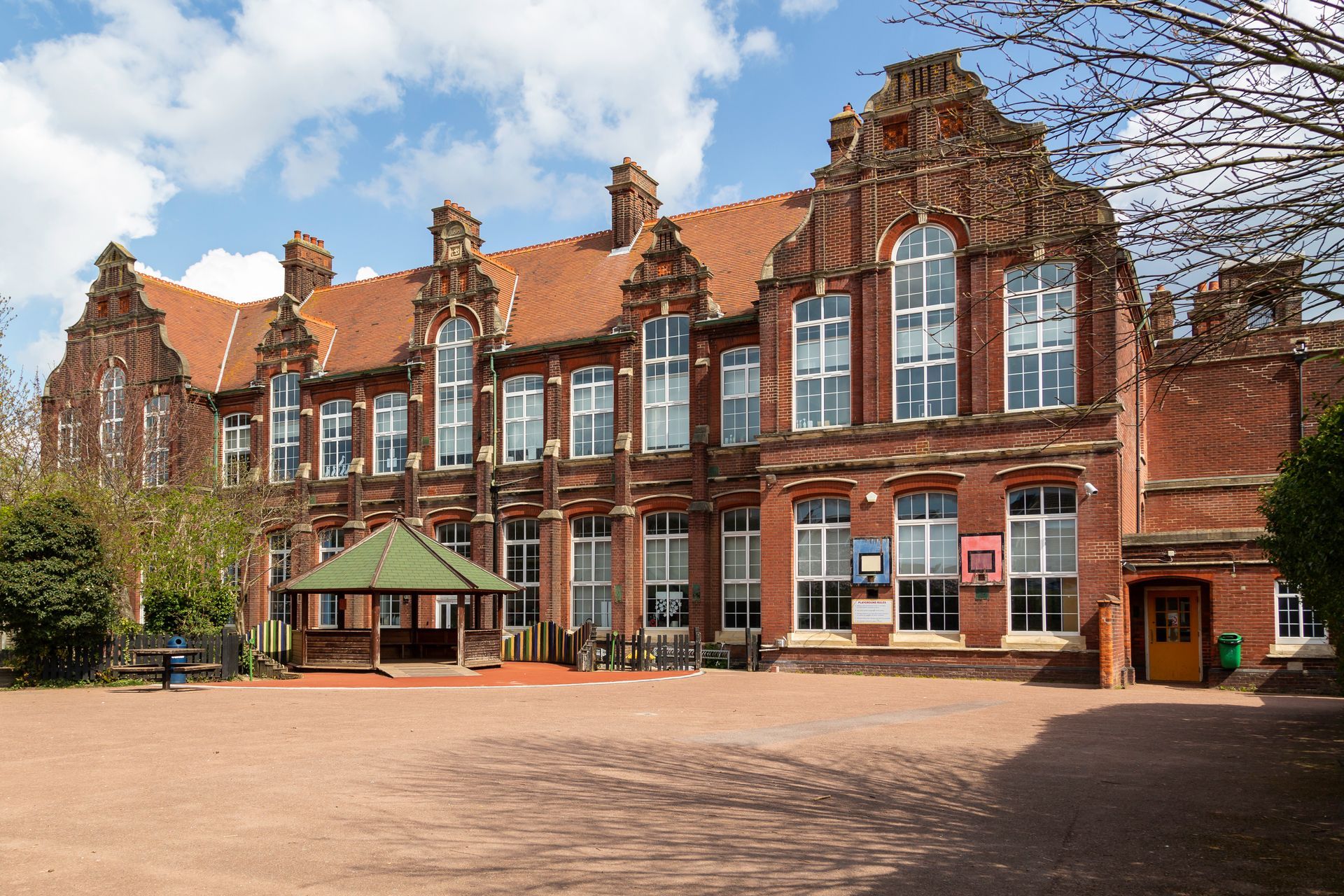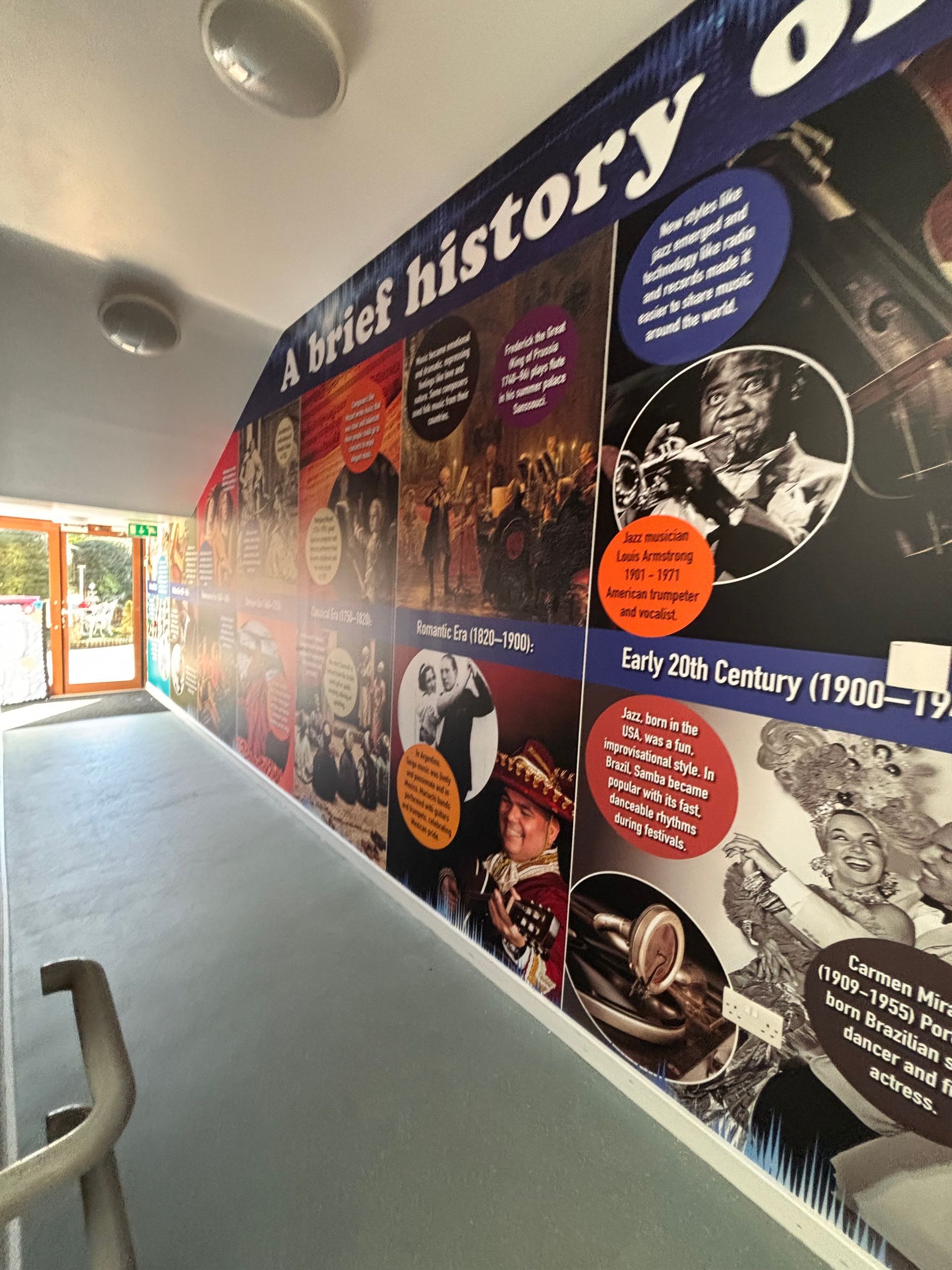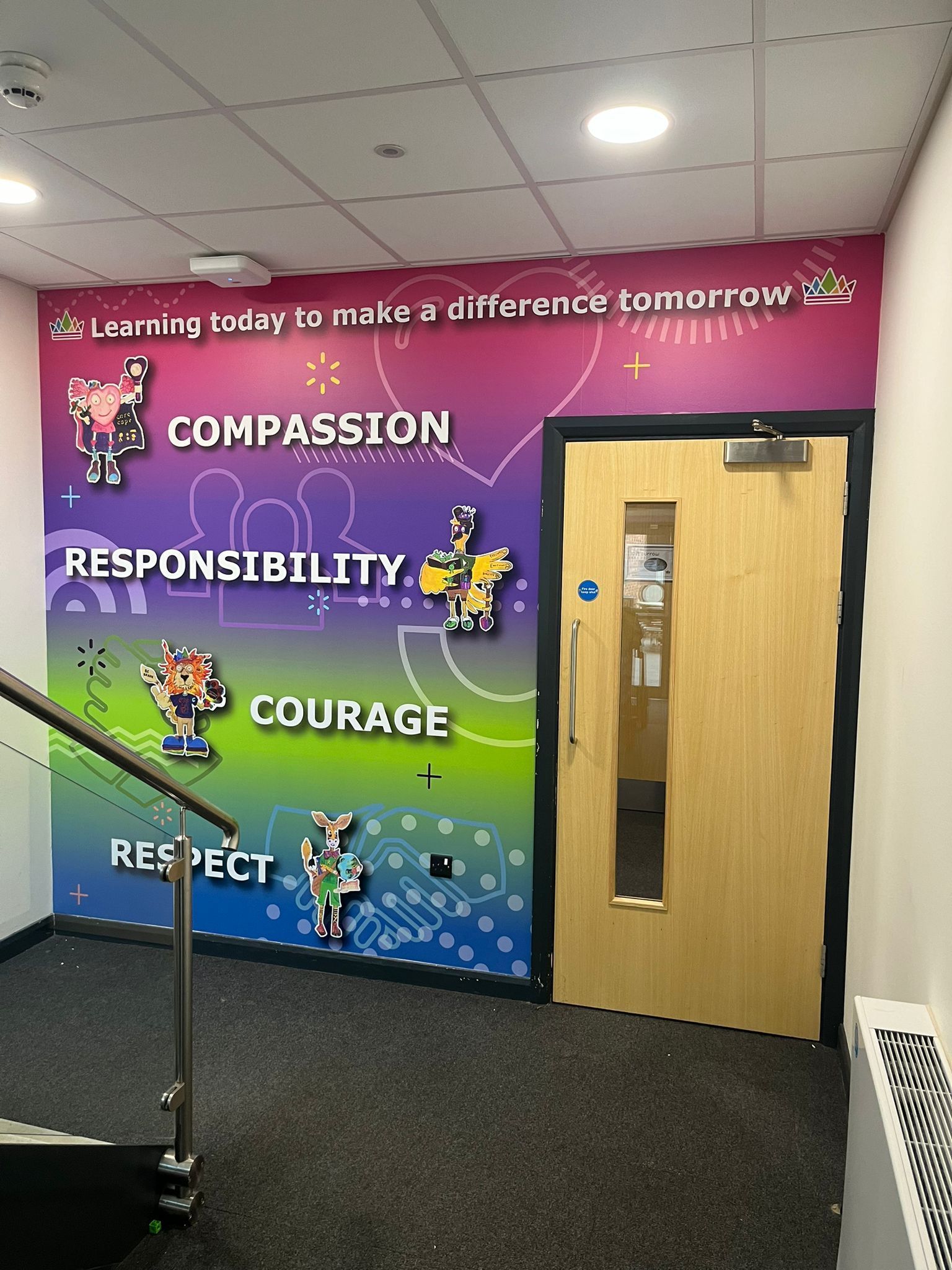Looking for other items, visit CUBED GROUP
Impact on schools-11
This part showcases stories and visuals of known community members, such as leaders, artists and other influential individuals.
Student and Community Collaborations: projects involving the school and the community highlighting shared accomplishments and endeavours.

1. Embracing Diversity;
- Variety of Cultures: Portray the richness of the student body and local community, ensuring that all communities feel included and respected.
- Student’s Artworks: Exhibit art pieces crafted by students that celebrate their roots and personal journeys.
Strategic Placement for Graphics with a Community Focus
1. Reception Areas;
- Welcoming Murals: Craft inviting murals showcasing landmarks and cultural symbols to connect visitors to the school's community.
- Community Bulletin Boards: Utilize physical boards to disseminate community updates, upcoming events, and joint ventures between the school and local organisations.
2. Passageways;
- Cultural Legacy Corridors: Design corridors with themes that honour culture and history using vibrant colours and captivating visuals to create welcoming educational spaces.
- Interactive Maps: maps of the area with features that offer insights into significant locations' historical significance.
3. Classrooms and Educational Spaces;
- Localised Learning Resources: Customize educational graphics to include examples and references.
- For example, local history could be a resource in social studies classes, while in biology classrooms, students could explore the flora and fauna.
- Community Projects Showcase: Set up areas where students can exhibit projects related to history, culture, and community service.
4. Common Areas and Cafeterias;
- Community Notice Board: Reserve a space in an area to showcase community accomplishments, upcoming events, and student contributions. This interactive space can reflect the community's involvement.
- Cultural Artwork Displays: Use murals in the cafeteria or other shared spaces to honour festivities and customs, fostering a lively and inclusive environment.

Strategy for Implementation
1. Collaborative Design Process;
Involve the Community: During the design phase, engage with historians, artists, and community leaders to ensure accuracy and cultural sensitivity.
Input from Students and Teachers: Gather ideas and feedback from students and teachers to incorporate their viewpoints into the graphics representing the school community values.
2. Selection of Materials;
Sturdy and Eco-Friendly Choices: Choose environmentally sustainable materials to ensure the graphics' longevity while aligning with sustainability principles.
Safety Considerations: Ensure all materials used are non-toxic and meet safety regulations.
3. Professional Installation;
Skilled Installation: Enlist the expertise of installers to ensure an accurate application of graphics and prevent issues related to alignment or damage.
Seamless Integration: Ensure the graphics blend seamlessly with the school's architecture and interior design.
4. Maintenance and Updates;
Routine Maintenance: Establish a schedule for maintenance to uphold the graphics’ freshness and vibrancy.
Content Updates: Plan for updates to ensure the content remains current and reflects community achievements and cultural developments.
Examples of Wall Graphics Centered on the Community
1. Welcoming Mural;
Design: A mural at the entrance featuring illustrations of landmarks, cultural symbols and a welcoming message in languages spoken within the community.
Impact: Establishes an impression of the school's ties to the local area and its dedication to inclusivity.
2. Cultural Heritage Corridor;
Design: Adorn a hallway with murals depicting events, cultural celebrations and traditional attire unique to the local community.
Impact: Educates students and visitors about the area's legacy, fostering respect and admiration.
3. Community Showcase Wall;
Design: A display showcasing community initiatives, student contributions, and collaborative projects between the school and community organisations. This event highlights the involvement of the school and the community. Acknowledges the accomplishments of both students and local partners.
Interactive Map;
Design: An area map featuring interactive elements that offer historical insights, exciting facts and narratives about notable locations.
Impact: Involves students in discovering their community, enriching their sense of belonging and pride in their locality.
In Conclusion;
By incorporating wall graphics that mirror the community heritage, schools can establish a sense of unity and belonging that resonates with students, faculty, and visitors. These visuals enhance the school's appeal and underscore its essential role in the community, promoting a sense of pride and unity. This strategy showcases the school's dedication to embracing diversity and inclusivity, creating a motivating environment for everyone.











